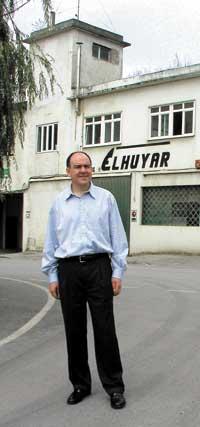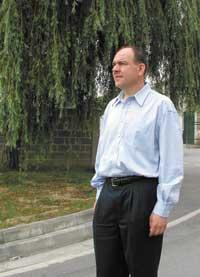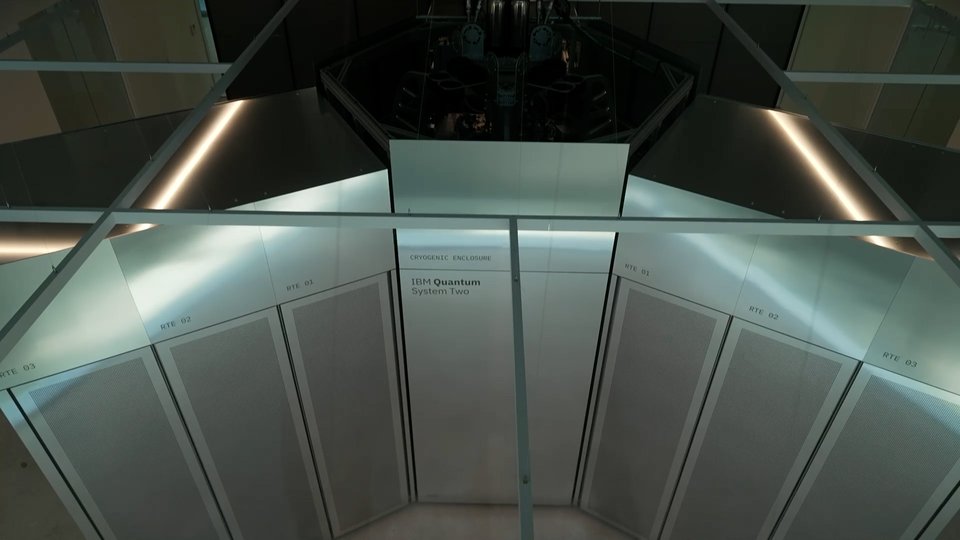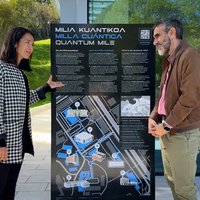José Antonio Maiz: "Thousands of companies work in the Intel environment doing things for PCs"
It won't be easy to get to work at Intel. What has been your professional career?
I studied at the Faculty of Physics, in San Sebastian, at the headquarters of the University of Navarra. In 1976, when I finished, I started doing my doctorate. I wanted to work in the field of integrated circuits, but there was no such possibility and in 1978 I asked for a scholarship to go to the United States. So I went on a master's degree at Ohio State University.

I finished my master's degree in 1980 and worked three more years to finish my doctorate. After completing the doctorate, they offer the possibility of internships in a company for a year and a half. Among the offers I received I chose the Intel company, so I started working at Intel. After that time, the commitment was going to return here, but at the end of the deadline we were working fully with the work there and asked me to stay a little more. But on my own I had to spend three years in research. That's why I worked at CEIT over the next three years with an Intele project.
During this period, together with staff from the CEIT materials department, we developed a study on integrated circuits related to high-current circuits. The technology developed at CEIT was used from 486 microprocessors.
Then I returned to Intele and decided to live there, although in summer we return every year to Euskal Herria, on the one hand to see the family and on the other so that children do not disconnect from the environment here. I am very happy in that sense, because the children come very happy.
I am also satisfied with this work, because the work we have done is somehow reflected in the following Intel microprocessors. I often think that Pentium 4 has my signature, mine and that of my companions.
How long can you spend from research results to applications in your field?
You never know. In addition to the extraction of the product, for this product a cheap manufacturing method must be obtained and that serves to produce large quantities. Moving to a production chain is often more difficult than generating knowledge.
Is it possible to perform transistors with a single atom layer?
They cannot be made with a single atom thickness because the electrical current that is transmitted by tunnel effect is too large for that distance. Therefore, much power is spent on this current and cannot be controlled. Not practical.

For example, the Pentium 4 microprocessor consists of an atomic film of 12 angstromes thick, consisting of four or five units of oxygen silicon, structure that is at the limit, since, despite the current of tunnels, it is perfectly controllable. But in a layer with fewer pairs of angstromas there is a tunnel effect too large. Until now, we have tried to make an increasingly thin layer of rust, but we have reached a limit and so we have started testing high dielectric constant materials to manufacture transistors.
What are these materials?
So instead of using silicon dioxide, we tested zirconium oxide, hafnium oxide, hafio silicide, etc. The dielectric constant of silicon dioxide is 4.0, while the constants of these materials are around 20. They are called High K materials (high means high in English and K is a symbol of the dielectric constant). Other materials have also been tested with intermediate constants such as aluminum oxide.
These materials, to achieve the same tunnel effect as the previous ones, must have much thinner layers, that is, the current that cannot be controlled with the same thickness is much less. This means that they have the most remote border, that we can continue to make transistors thinner other years and that in some generations we will not find the border of the tunnel effect. However, at some point we will find the border and also the intermediate process will be increasingly expensive.
Do these materials increase the process?
No, because we use very small amounts of material. If we are making a layer of a nanometer, with a kilogram we can fill a surface of many kilometers. Therefore, in our case, the cost is not of the material itself but of the purification process. The degree of purity we need is very high. Materials can have no other indication, and if desired doping must be fully controlled. Unwanted signs can cause memory changes that involve changes and, for example, an error on the chip that stores the balance of a current account can cause a scandal.
Therefore, these materials must be carefully worked. What physical conditions are necessary in microprocessor factories?
They are very hard. For example, as for cleanliness, in the standard state (called class 1) there must be less than one particle per cubic foot, and for us a particle is anything that exceeds 0.2 microns. To get an idea, under normal conditions there will be about 10 million particles per cubic plant. The cleanest operating room in the hospital also has 100,000 particles.
Therefore, workers in a class 1 process are fully covered and should breathe through tubes. And the air of the factory is in continuous renovation, the floor is a metal grill and the ceiling a large filter. The air moves from top to bottom and is renewed many times in a minute.
People get used to working in this situation, but it is not comfortable, although humidity and temperature are controlled with great precision (for example, the temperature with precision of one degree). Therefore, nowadays people are not in contact with olatas (laminated chips), but by putting them in the boxes they are taken from one machine to another and only come out when they are inside. They never have contact with the outside environment. This is a work through robots that make people not so demanding.
In addition to microprocessors, what other products are manufactured at Intel?
Intel is included in many areas. It is the company that sells the most flash memory worldwide, for example. On the other hand, it performs many microcontrollers, that is, electronic systems that control machines that are not computers. In cars, for example, microcontrollers are used to control things like injection, ABS system, etc. Intel performs approximately 200 million microcontrollers a year.

However, our company has worked in many other areas such as wireless devices, communications products, internet, optics, etc. The truth is that in microprocessors we have a very large market, but very small in other areas. There has been a lot of movement in internet services, but that market is also slowing down, because it is very difficult to make money with it.
Who makes you the most competitive?
AMD ( Advance Micro Devices) on microprocessors and IBM and Sun on servers.
How do you see the competition between PCs and Macintosh on personal computers?
Macintosh currently has very little strength: only 5% of the world market. In fact, Apple designers were very innovative, especially in the user interface, so they have a succession in the market. Artists who work with graphics, for example, have become accustomed and follow Macintosh. But they cannot maintain the competence of PCs.
In Apple they opted for a very vertical structure, that is, they buy microprocessors, but from there everything is done in Apple: operating system, computer, applications, etc. This way the company has control of the entire process. Therefore, integrating things well has been much easier for them than for those who make PC computers.
But the latter began with a completely different strategy: they work with open systems. Intel performs a standard chip and the rest is done in other companies. Now there are thousands of companies working around Intel doing things for PCs. It's much harder for everyone to match, but from a market point of view Intel's strategy is effective.
Buletina
Bidali zure helbide elektronikoa eta jaso asteroko buletina zure sarrera-ontzian










